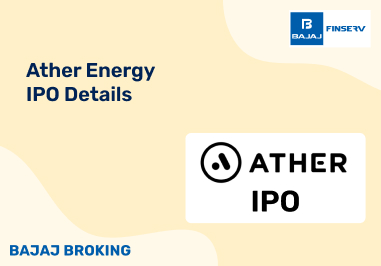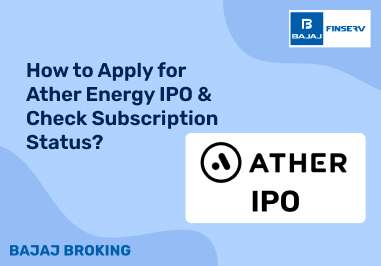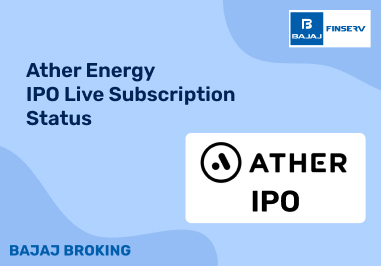BAJAJ BROKING
Ather Energy IPO is Open!
Open a Free Demat Account
Trade Now, Pay Later with up to 4x
Track Market Movers Instantly
Understanding PPF Withdrawal
Introduction The Public Provident Fund (PPF), introduced in 1968 by the National Savings Institute of the Ministry of Finance, is designed to encourage individuals to invest their savings and reap returns over time. PPF investments offer income tax benefits, allowing individuals to claim exemptions on the interest earned and build a financial cushion for their post-retirement needs.
The current interest rate on PPF is 7.1% per annum, determined by the Ministry of Finance. This interest is compounded annually and paid on March 31st. Upon maturity, which occurs 15 years from the account opening, individuals can withdraw funds from their PPF account.
In specific situations, after six years from the account opening, partial withdrawals are permitted. The withdrawal amount is limited to 50% of the total corpus in the fund at the end of the fourth year from the date of account activation.
For a detailed breakdown of PPF withdrawal rules based on duration, reasons, and withdrawal limits, refer to the table below –
| Withdrawal | Time | Grounds For Withdrawal | Amount |
| After the account matures | After 15 years from account opening | Any | Entire Corpus |
| Partial withdrawal of funds | After 6 years from account opening | Any | 50% of the total available balance |
| Premature closing of an account | After 5 years from account opening | Educational, Medical | Entire amount |
Also Read: EPF or PF Withdrawal Rules
PPF Account Extension and Withdrawal Rules
PPF, or the Public Provident Fund, is a popular and preferred investment instrument in India that offers tax benefits and interest income. You can open a PPF account with either a bank or a post office, and invest up to Rs 1.5 lakh in a financial year. The tenure of a PPF account is 15 years, but you can extend it in blocks of 5 years for any number of times. You can also withdraw funds from your PPF account under certain conditions. Here are some of the PPF withdrawal rules and procedures that you should know:
- Full withdrawal: You can withdraw the entire amount in your PPF account after it matures at the end of 15 years. To do so, you need to submit Form C along with your PPF passbook to the bank or post office where you have opened your account. You can also download Form C online1, get a printout, fill it up, and submit it to the respective bank or post office. To fill out Form C, you need to provide the following details:
- PPF account number
- Amount of withdrawal
- Number of years lapsed from the initial investment
- Mode of withdrawal, which is either DD or transfer to a bank account.
- Partial withdrawal: You can withdraw up to 50% of the balance in your PPF account after the completion of 6 years from the date of opening.
- Premature closure: You can close your PPF account before its maturity only under certain special circumstances, such as higher education or medical treatment of yourself, spouse, children or dependent parents. You can do so after completing 5 years from the date of opening.
- Extension: You can extend your PPF account beyond its maturity for any number of times, in blocks of 5 years each. You have two options for extension:
- Without contribution: You can continue your PPF account without making any further deposits, and earn interest on the existing balance. You can withdraw any amount from your account once in a financial year, without any limit. To do so, you do not need to submit any form or document.
- With contribution: You can continue your PPF account with regular deposits, and earn interest on the total balance. You can withdraw up to 60% of the balance at the beginning of each extension period, once in a financial year. To do so, you need to submit Form H within one year from the date of maturity of your account.
Share this article:
Read More Blogs
Disclaimer :
The information on this website is provided on "AS IS" basis. Bajaj Broking (BFSL) does not warrant the accuracy of the information given herein, either expressly or impliedly, for any particular purpose and expressly disclaims any warranties of merchantability or suitability for any particular purpose. While BFSL strives to ensure accuracy, it does not guarantee the completeness, reliability, or timeliness of the information. Users are advised to independently verify details and stay updated with any changes.
The information provided on this website is for general informational purposes only and is subject to change without prior notice. BFSL shall not be responsible for any consequences arising from reliance on the information provided herein and shall not be held responsible for all or any actions that may subsequently result in any loss, damage and or liability. Interest rates, fees, and charges etc., are revised from time to time, for the latest details please refer to our Pricing page.
Neither the information, nor any opinion contained in this website constitutes a solicitation or offer by BFSL or its affiliates to buy or sell any securities, futures, options or other financial instruments or provide any investment advice or service.
BFSL is acting as distributor for non-broking products/ services such as IPO, Mutual Fund, Insurance, PMS, and NPS. These are not Exchange Traded Products. For more details on risk factors, terms and conditions please read the sales brochure carefully before investing.
Investments in the securities market are subject to market risk, read all related documents carefully before investing. This content is for educational purposes only. Securities quoted are exemplary and not recommendatory.
For more disclaimer, check here : https://www.bajajbroking.in/disclaimer
Our Secure Trading Platforms
Level up your stock market experience: Download the Bajaj Broking App for effortless investing and trading













